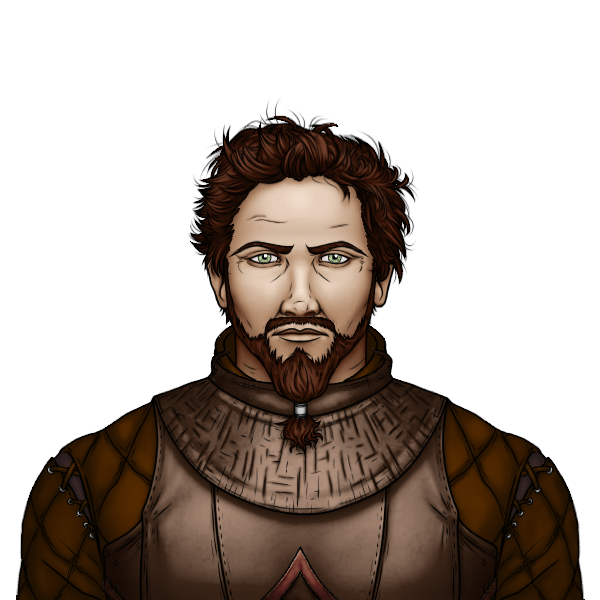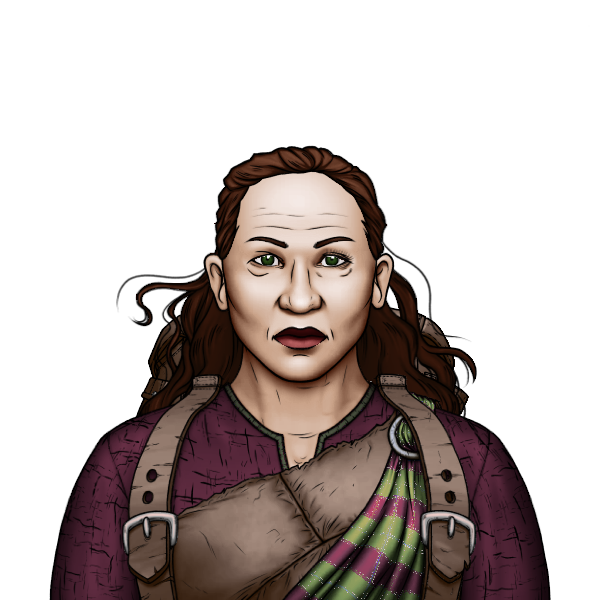Leante


Sometimes called the Ley or the Leyfolk. "Leante" means "Daylight" or "Day People" in the Aernigh Tongue. Colloquially interpreted to mean Easterner.
The Eastern Revellians are generally considered the cultural guarantors of Revellia. The Deinain still have influence here, but Host Keeping is far more prevalent, and the "civilizing" influences of the Orckid Empire, Ethel, and Liddinawth are evident.
The stereotypical Leante is a ghast-faced, broad-shouldered creature with red or brown hair; in fact, early Khabarese explorers called them ghouls, "bloodless corpse-people, with hair of fire." Modern times have made them as diverse as anywhere else, however.
Although Southerners have historically resisted all foreign conquests in one form or another, they have also had a historic awe and reverence from said invaders, who invariably haled from a more advanced society. The Leante are descended from those Revellians who embraced or integrated some of the traits of these invading forces (as opposed to the Siiari and the Rathi, who remain largely isolationist to this day). Chief among these are the seemingly contradictory loves for individualism and state-sponsored ritual: though even in Revelback itself, these loves are not considered as intense as in the North. The individualism of the North stems more from a worship of bloodlines, while that of the Leante (and the Ethelites) is a recent import of Eysch culture.
The Leante Creation Myth suggests that the Leyfolk may have been a seafaring folk who settled on the shores of Revellia before subduing the Siiari and possibly other native peoples like the Peinti or even the Aernigh (if they existed). Evidence of what is thought to be Leante culture can be found as far north as the Sutir Reach, and the Thirteen Invasions outright names them as foreign conquerors. If this is so, then some great unrecorded tragedy must have struck down Leante rule.
Ancient poems claim the first Leyfolk were led by King Bethrael, who stole fire from Harcus the Burning Ram and used it to rescue the Siiari from the monsters of ancientry. This tale casts not only the Leyfolk as the natural masters of the Siiari and adversaries of the Deinain (universally worshipped throughout Southern Milos at the time), but Bethrael as the god-king of their people. Naturally, this would set Clan Beth as the cultural leaders of the Leante people (who were supposedly called the Pig People by their enemies in ancient times. Indeed, Baarach of Beth, another legendary king, is credited with the conquest of the Aernigh and ending the Aercuadh, as well as conquering the Cape of Monsters and ruling over most (though not all) of Eastern Revellia. Yet, when the Peninsula emerged from the Lost Age and began to record its history again, it was Clan Bastion that ruled over the canton. The Bastions seemed to worship the Deinain, as most Leyfolk had for much of the Peninsula's history. Yet something during the Lost Age appears to have led to a vast conversion, with most Eastern clans being Host Keepers by the time of Greeyan the Cold King's victory over Corrik Bastion the Coward. This might have been a reaction to the Khabarese Crusade in the West, or it may be that whatever Clan Beth had worshipped before in opposition to the Deinain lent itself easily to the veneration of the Hosts, and likely supported the modernism that separates them from both the Siiari to the west and the Rathi to the northeast.
The Leante's modernism is seen to have emerged after the Lost Age, and is generally thought of as a reaction to the First Rule of Clan Ainros. Having emerged from Western Revellia in the Fiirwood, the kings of Clan Ainros were notably distinct from the native lords and peasants of the Ithir Plains. These new Eastern kings made several concessions to reconcile themselves to the East: Greeyan the Cold King abandoned polygamy, dismissing one of his two wives to rule the Pine Drum, the minor holdfast from which the ancestors of Clan Ainros haled. Greeyan's son Maitiu converted to the Host Keeping Faith and declared it the canton's official religion (for weal or woe). Garland the Conqueror (and his Wizard Elisel) helped propagate and regulate spelling throughout the canton. All of these were seen as contrary to traditional Revellian values, yet they were ideas celebrated by most of the powerful in the East.
Along with Garland the Conqueror came a renewed appreciation for the Viisianars as the ancient cultural guarantors of Milos. Garland's queen was a Liddinawth, who were believed to be descended from the Viisianars and held many superficial similarities. This too would prove a contrast to Western culture, where the Viisianars were lumped in with the Mornals and Khabarese as mere invaders, nothing more. Ironically, the West would become more accepting of the Khabarese as they continued to rely on them to help keep the East in check.
It has been argued that this deliberate embrace of outside (some say "Northern") values spelt the end of the Ainros' rule. For all their changes, they were still viewed as Western kings, heavily influenced by the Liddinawths, having little in common with the Leyfolk themselves. This no doubt played a role in the eventual taking of the East (and consequently all Revellia) by King Barthos the Beneficent, ostensibly returning the land to its ancestral (and therefore rightful, in their eyes) rulers, Clan Beth.
Culture
Common Myths and Legends
Historical figures
Parent ethnicities
Diverged ethnicities
Related Organizations
- Clan Aerrin
- Clan Ainden
- Clan Ainros
- Clan Barkside
- Clan Bastion
- Clan Beth
- Clan Borrins
- Clan Capall
- Clan Delegh
- Clan Derrenegh
- Clan Dorn
- Clan Duum
- Clan Dylaen
- Clan Einard
- Clan Elkwood
- Clan Farre
- Clan Farrow
- Clan Fawn
- Clan Fields
- Clan Furan
- Clan Giiran
- Clan Graunt
- Clan Griivan
- Clan Han'dylth
- Clan Haust
- Clan Hayn
- Clan Hunter
- Clan Ishim
- Clan Kelliers
- Clan Maan
- Clan Maelfen
- Clan Maven
- Clan Moyra
- Clan Odon
- Clan Paddox
- Clan Padwell
- Clan Roark
- Clan Rordan
- Clan Rutach
- Clan Sinachar
- Clan Slabh
- Clan Sorchal
- Clan Sorshan
- Clan Sowwing
- Clan Swinnerd
- Clan Taddagh
- Clan Toll
- Clan Uirlis
- Clan Warren
- Lordslands of Milos
- Revellia Canton
Related Myths
Languages spoken
Related Locations

